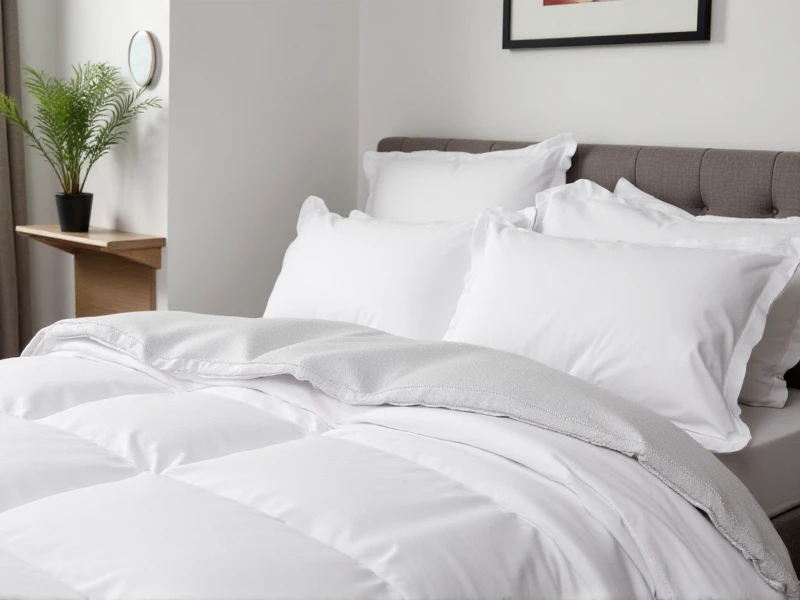Secrets to Superior Sleep: Unlock the Power of Your Pillowcases
2025-06-03

Here is an SEO-optimized article focused on the keyword "pillowcases":
When prioritizing sleep quality, we often focus on mattresses and pillows, overlooking a crucial element: pillowcases. These unsung heroes of your bedding ensemble do far more than just cover your pillow. Selecting the right pillowcases can profoundly impact sleep comfort, skin health, hair vitality, and overall hygiene. Discover why upgrading your pillowcases is a simple yet transformative step towards a better night's rest.
Why Your Pillowcases Matter More Than You Think:
Your face and hair spend hours in direct contact with pillowcases night after night. This intimate contact makes the fabric choice critical. Subpar materials can trap heat, absorb natural oils, and harbor allergens, potentially leading to skin irritation, acne (sometimes called "pillowcase acne"), hair breakage, and disrupted sleep. Conversely, high-quality pillowcases actively contribute to a cleaner, cooler, and more comfortable sleep environment.
Understanding Pillowcase Materials: Finding Your Perfect Match
1. Silk Pillowcases: Reign supreme for beauty sleep.
Pros: Exceptionally smooth, minimizing friction against skin and hair. Helps retain skin moisture and prevent sleep creases. Reduces hair frizz and breakage. Naturally hypoallergenic and temperature-regulating.
Ideal For: Sensitive, acne-prone, or mature skin; those seeking to protect hairstyles or prevent hair damage; hot sleepers (mulberry silk is especially breathable).
2. Satin Pillowcases (Polyester): A popular budget-friendly alternative.
Pros: Offers a sleek, smooth surface at lower friction than cotton. Often more affordable than silk. Provides some hair and skin benefits similar to silk. Wrinkle-resistant and easy care.
Cons: Can trap heat more than silk or linen. Less breathable due to synthetic nature (polyester). Durability varies.
3. Cotton Pillowcases: The classic, versatile choice.
Pros: Highly breathable, naturally hypoallergenic (especially organic), durable, softens with washing, and readily available. Long-staple or Egyptian cotton pillowcases offer superior softness and durability.
Cons: Higher friction than silk/satin. Less effective at preventing hair tangles or sleep lines. Can wrinkle easily (depending on weave).
Look For: High thread count (300-600 usually optimal for softness and breathability) and combed cotton for smoothness. Percale for crisp coolness, Sateen for silky sheen.
4. Linen Pillowcases: Breathe easy with natural texture.
Pros: Exceptionally breathable and moisture-wicking – ideal for hot climates or night sweats. Highly durable and gets softer over time. Naturally antibacterial.
Cons: Typically more expensive. Has a distinctive, slightly textured drape that might not appeal to everyone looking for a super-smooth feel. Wrinkles are part of its charm.
5. Bamboo Pillowcases: Soft, sustainable, and smooth.
Pros: Naturally thermoregulating (cool in summer, warm in winter). Silky soft texture, naturally hypoallergenic and antibacterial, eco-friendly, and moisture-wicking. Excellent for sensitive skin.
Cons: Wrinkle-prone. Can feel cooler than cotton initially. Ensure it's derived viscose/rayon for silkiness.
Beyond Material: Essential Pillowcase Considerations
Weave: Percale (lightweight, crisp), Sateen (denser, silky feel, less breathable), Jersey (stretchy, t-shirt like comfort).
Closure: Envelope closures keep pillows neatly tucked in. Zippered are less common but ultimate for security.
Fit: Standard (20"x26"), Queen (20"x30"), and King (20"x36"). Measure your pillows! Ill-fitting pillowcases look sloppy and slip off.
Thread Count (Cotton/Bamboo): While important for cotton, quality is about fiber length and weave too. 300-600 is usually optimal; excessively high counts can be less breathable.
Hypoallergenic: Crucial for allergy sufferers. Look for tightly woven fabrics like silk, satin, percale cotton, or bamboo.
Ease of Care: Always check wash instructions (especially silk). Most cotton, bamboo, and satin are machine washable.
How Often Should You Wash Your Pillowcases?
This is crucial! Dermatologists and bedding experts universally recommend washing pillowcases at least once a week. Think about it: dead skin cells, oils, sweat, saliva, hair products, dust mites, and makeup residue accumulate nightly. Infrequent washing can exacerbate skin problems and allergies. For acne-prone or sensitive skin, washing every 3-4 days may be beneficial. Always wash new pillowcases before first use to remove sizing chemicals.
Transform Your Sleep Tonight: Investing in the Right Pillowcases
Choosing the perfect pillowcases isn't just about aesthetics; it's an investment in your nightly comfort and well-being. Whether you prioritize silk's luxurious slip to prevent wrinkles and hair tangles, linen's unbeatable breathability, or the timeless comfort of high-quality cotton, the right material makes a tangible difference. Consider your biggest sleep goals: cooling down, tackling breakouts, preserving your blowout, reducing allergies, or simply pure coziness.
Don't underestimate the power of fresh, high-quality pillowcases. Making a conscious upgrade is a remarkably simple step to elevate your sleep hygiene, enhance your appearance, and turn your bed into a true sanctuary. Replace them regularly and wash them diligently – your skin, hair, and pillow will thank you for years of comfortable, healthier sleep. Sweet dreams, made possible layer by layer!
Category: